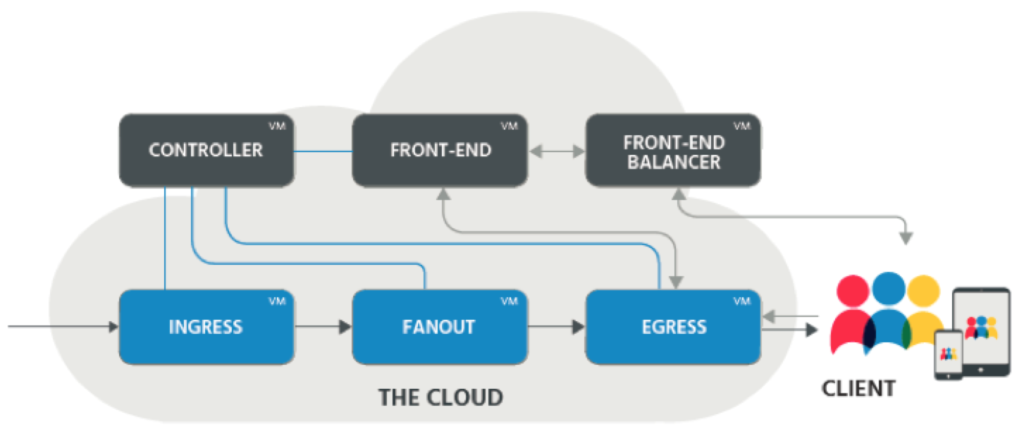A Detailed Look At How Net Insight Syncs Live Streams Across Devices
With last week’s live NFL stream on Twitter, we were all once again reminded of the delay that exists when it comes to streaming over the Internet. And as more premium video goes online, and more second screen interactivity is involved, syncing of the video is going to become crucial. Two months ago I highlighted in a blog post how Net Insight solves the live sync problem and I’ve been getting a lot of questions on how exactly it works. So I spent some time with the company, looking deeper at their technology in an effort to understand it better.
Net Insight provides a virtualized software solution that can be deployed over private, public or mixed cloud. The terminating part of the solution is the client SDK that has pre-support for the most popular connected iOS and Android devices. The SDK contains the media distribution termination part, but also media decoding and rendering, i.e. a player. The client SDK enables application developers to add next generation TV to their apps, cross-platform, with a uniform API.
Net Insight’s product is called Sye and it uses an optimized streaming protocol made for real-time applications. Sye operates directly on the video stream avoiding the inherent latency incurred by the packaging. The benefit of using Sye is a higher utilization in the distribution network which directly translates to a better viewing experience by providing and maintaining higher profile viewing for a longer period of time compared to legacy HTTP streaming. In legacy HTTP streaming TCP inherently forces back-offs and slow starts when packet loss is encountered. Sye uses an enhanced packet recovery protocol as the first defense of packet loss. When there are longer periods of bandwidth degradation, an ABR profile level change is enforced with a unique perspective. That perspective is the knowledge of the currently available client side bandwidth. With the server-side network aware function, restoring the highest possible ABR quality level is as fast as the IDR interval defined in the transcoder.
The receiving part of the system consists of a client binary to be included into existing apps for resource requesting, network termination, media decoding and rendering. The back-end server components are split up into two different functions: data plane and control plane. These functions are responsible for distributing streaming media as an overlay network on top of any type of underlying network infrastructure.
 The control plane functions consist of controller, front-end and front-end balancer. These functions are responsible for client resource requests, load balancing of data and media, configuration, provisioning, alarming, monitoring and metrics, all presented and handled through their dashboard. The system is a pure software solution which Net Insight says is “hyper scalable” and therefore deployable on bare metal, a fully virtualized environment or in a hybrid physical/virtual approach. While a fully virtualized cloud based solution is supported, the egress of the data plane will utilize most of the network I/O provided, thus dedicated I/O is suggested for the best and most predictable performance.
The control plane functions consist of controller, front-end and front-end balancer. These functions are responsible for client resource requests, load balancing of data and media, configuration, provisioning, alarming, monitoring and metrics, all presented and handled through their dashboard. The system is a pure software solution which Net Insight says is “hyper scalable” and therefore deployable on bare metal, a fully virtualized environment or in a hybrid physical/virtual approach. While a fully virtualized cloud based solution is supported, the egress of the data plane will utilize most of the network I/O provided, thus dedicated I/O is suggested for the best and most predictable performance.
While a lot of what is going on in the backend that makes it possible to sync live streams is complex, this is one of those solutions in the market where seeing is believing. I’ve seen the solution in-person and it’s amazing how well it works. The ability for Net Insight to sync the same stream, across multiple devices, to be in sync with the broadcast TV feed is amazing. Premium content owners that stream live, and especially sports content, are going to have to address the sync problem soon. It’s becoming too much of a problem when consumers are purposely staying away from the social element of a live event, just so their experience isn’t ruined. Synced live streaming is the next big thing.
